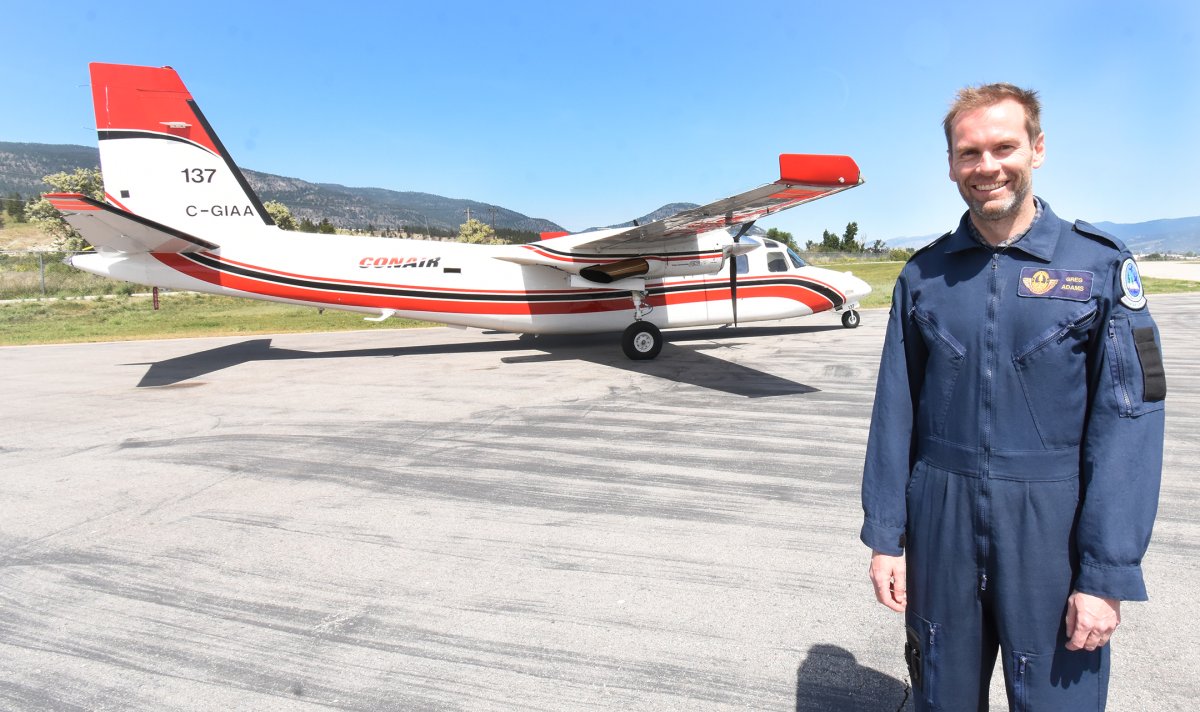Greg Adams is tasked with the aerial choreography of fighting wildfires with the ultimate goal of bringing his pilots home safely.

As an air attack officer for the BC Wildfire Service, he sits in the often bumpy front seat of the lead bird-dog aircraft to plot out the plan of attack on the unpredictable, fiery enemy below.

“Our primary role in the bird dog is to make sure the tankers can safely deliver the retardant we’re asking them to deliver,” said Adams, 49, who formerly rappelled from helicopters as a frontline firefighter.
“If there is some terrain or obstacles that need to be avoided, we can find it. Sometimes it is a rough ride; I’ve hit my head a few times.”
It’s that element of surprise he enjoys most about the work.
“You don’t really know what you’re getting into until you actually get out there,” said Adams. “The variety is great and you really can get some surprises.”
Although he’s not a pilot, it’s critical that Adams know the exact capabilities and limitations of the aircraft he’s guiding through the fire zones.
That includes the Dash 8-400AT planes, the world’s newest air tankers, two of which replaced the 66-year-old, retired workhorse CV580 fleet at the Penticton BCWS air tanker base this season.
The new aircraft were introduced in Canada in 2022 and three more were added this year — two in Penticton and another in Fort St. John.
No one knows better just how much more valuable the new planes are than veteran Conair captain Richard Tolson, who has flown both old and new in fire-attack situations.
“The difference between the two, well, I guess it’s like steam driven versus modern automation, autopilot and even air conditioning,” said Tolson, 59, who flies alongside Roeland Schaeffer.
“We were working with older electronics and sometimes you would be dealing with 35 or 40 degrees Celsius in the cockpit, so it could be challenging, for sure.

“The Dash 8 is a lot more powerful aircraft and carries more retardant and it’s made all the difference in the world, so we don’t have anywhere near the restrictions that we did in the Convair days.”
The additional power means the aircraft can use shorter runways in smaller airports to refuel and load retardants.
The planes also burn far less fuel, and, in some instances, can drop more than double the payload for fuel burned.
While he was very comfortable flying the old aircraft, Tolson “jumped at the chance” to fly the Dash 8 at the age of 58.
“It was a challenge for the first couple of years to go on automation, but I figured it out with the help of a lot of very talented young automation guys,” he said with a laugh.
“The children of magenta we called them, and they have helped us 25-year guys out tremendously.
“But firebombing is firebombing. Once you get over the fire, it’s the same. It’s just all the in-between stuff, instrument capability, all-weather capability and we now have the benefits of all worlds.”

What does Tolson enjoy most about his job?
“The camaraderie. The missions are great — the most fun you can have at low altitude — but it’s really the people you work with.”
And for Tolson, all the automation in the world cannot replace co-workers when it comes to fighting fires, and, most importantly, coming home afterwards.
“We rely on all those people out there who are doing their jobs to keep us all safe no matter what we’re flying. They are our lifeline.”







Comments